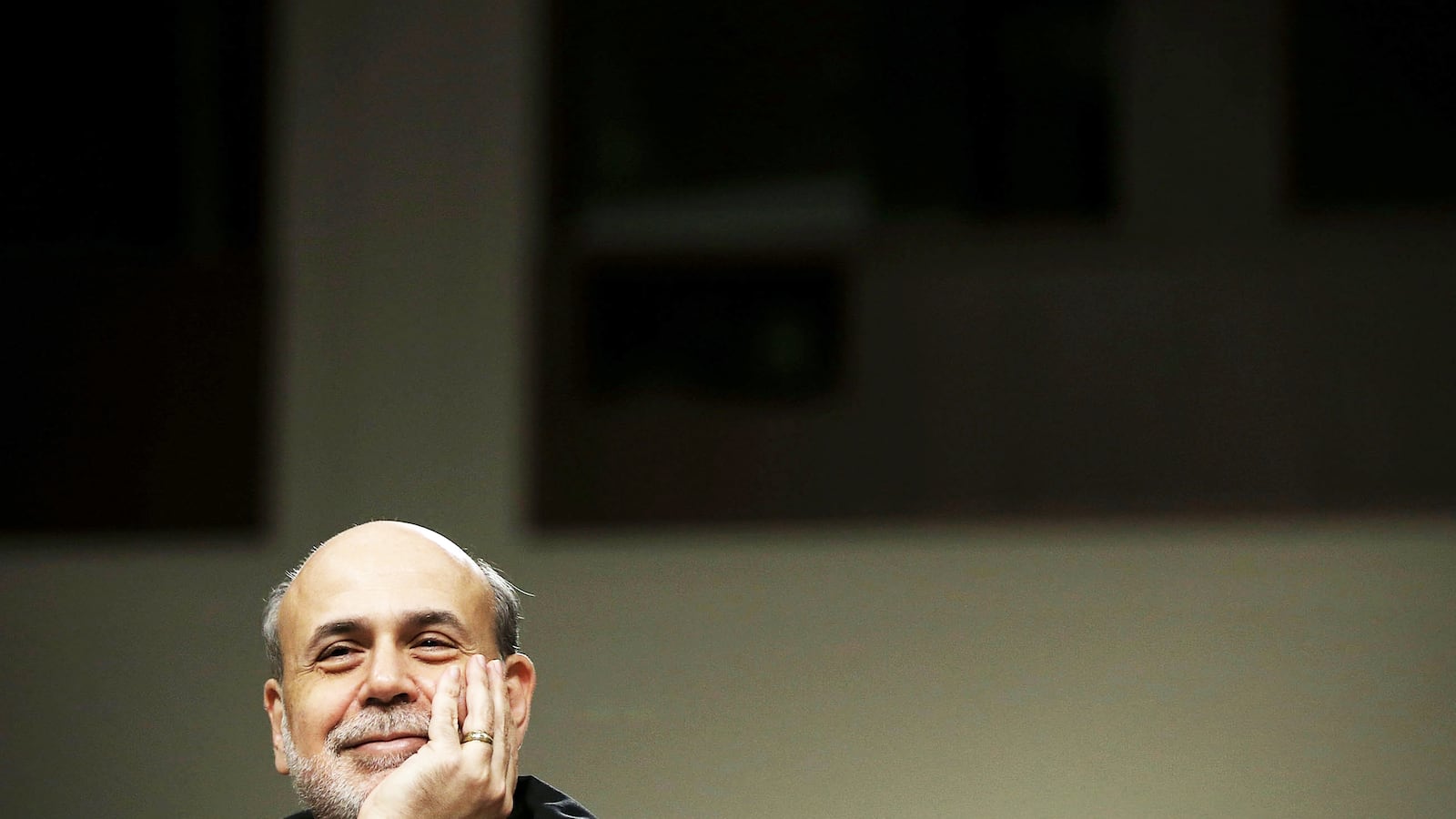Yes, things are really getting better in the U.S. economy.

That’s the conclusion of Federal Reserve Chairman Ben Bernanke and his colleagues at the Federal Open Market Committee. On Wednesday, the Fed announced it would scale back—or taper—the $85-billion-per month bond buying program by $10 billion per month. The reason? The economy is improving, and the Fed thinks the better times are here to stay.
There has been “meaningful cumulative progress in the labor market,” Bernanke said, noting that since the Fed started its bond-buying efforts the economy has added 2.9 million payroll jobs and the unemployment rate has fallen from about 8 percent to 7 percent. Meanwhile, the data flow has been generally positive—with household spending, business investment, and housing prices all moving up. And to top it off, Congress and the White House—whose tax increases, spending cuts, and brinksmanship have put a damper on economic growth—are showing signs of hugging it out. “Fiscal policy is restraining economic growth, although the extent of restraint may be diminishing,” he said.
While this move represents a change in policy, it doesn’t mark much of a departure. The Fed will continue to purchase $75 billion worth of bonds and mortgage-backed securities per month, as part of an effort to keep long-term rates low. In addition, Bernanke said the Fed will maintain its policy of keeping short-term interest rates close to zero—at least for another year.
As part of this statement, the Fed enhanced its so-called “forward guidance,”—i.e. telling the markets what to expect in the future. In the past, the Fed had said that it would start to unwind stimulative efforts once unemployment fell below 6.5 percent. But today, Bernanke said that the Fed would maintain its zero-interest rate policy “well past the time that the unemployment rate declines below 6.5 percent” — so long as inflation remains contained. All of which means banks and companies will be able to gorge on cheap short-term money for another year or two. In its current forecast, the Fed predicts the unemployment rate will fall to between 6.3 percent and 6.6 percent in the fourth quarter of 2014.
Analysts are likely to spin this as a first move in tightening and a decrease of support for the economy. But the change is only marginal. The Fed is still intervening significantly in financial markets, and stands willing to do more if necessary. In fact, Bernanke expressed more concern than usual about the prospects of inflation being too low. “The committee is determined to avoid inflation that is too low as well as inflation that is too high.”
In other words, the Fed isn’t really putting on the brakes. It is just taking its foot off the gas pedal a tiny bit. And as Bernanke passes control of the steering wheel to Janet Yellen, it’s still going at a very rapid clip. “We intend to maintain a highly accommodative policy.” Bernanke said.
The era of cheap money is over. Long live the era of free money.






